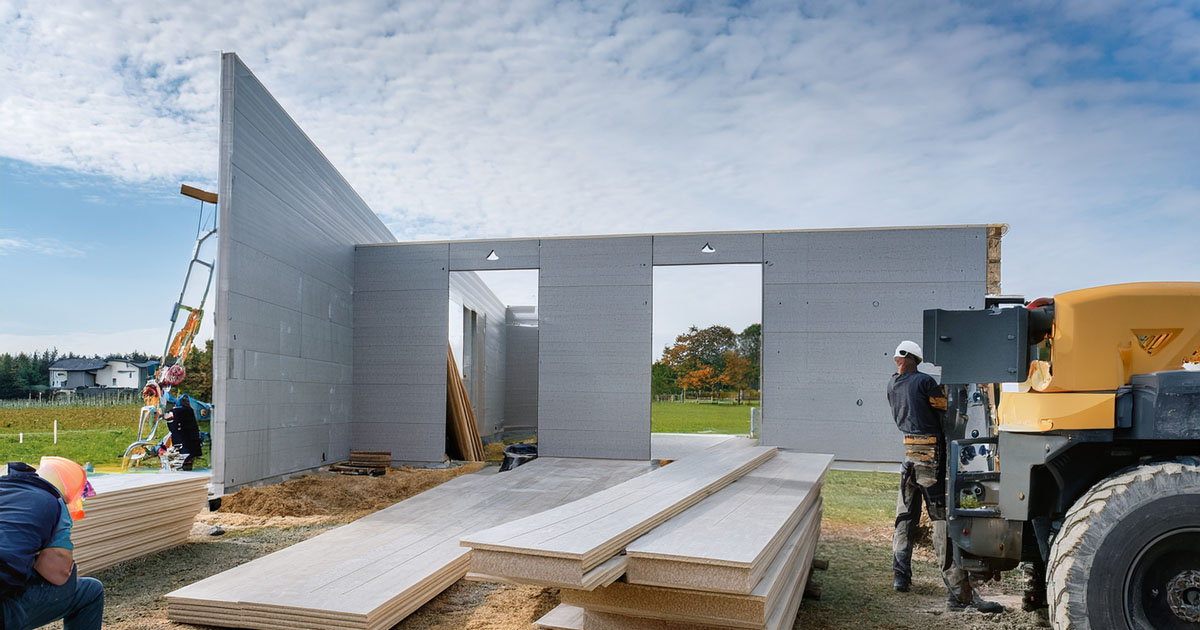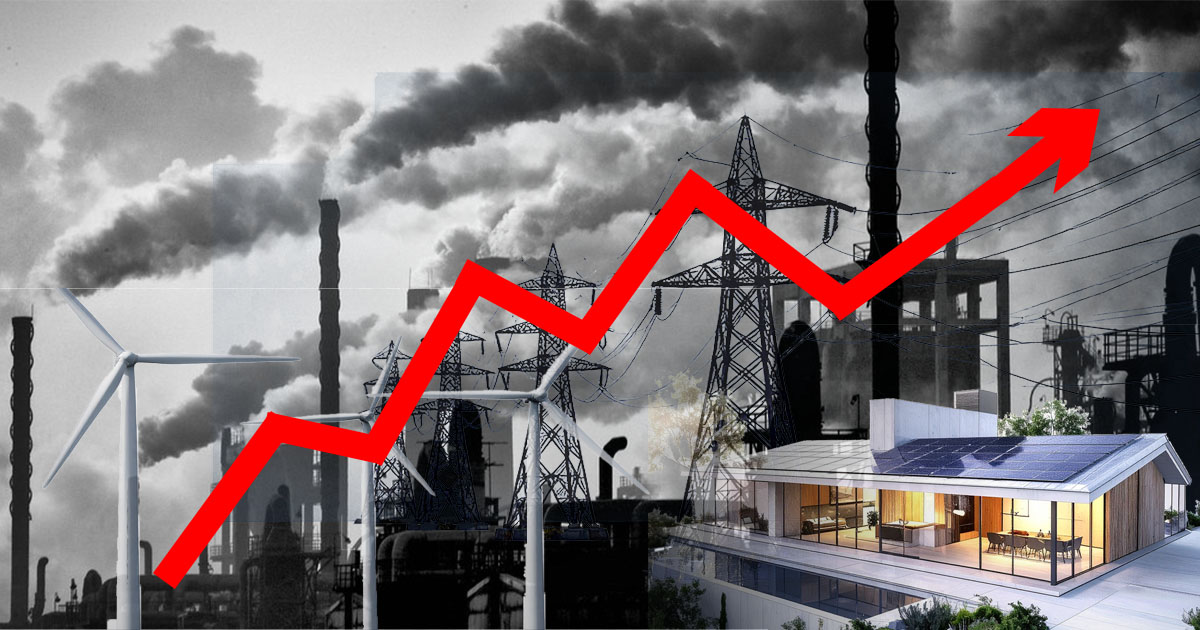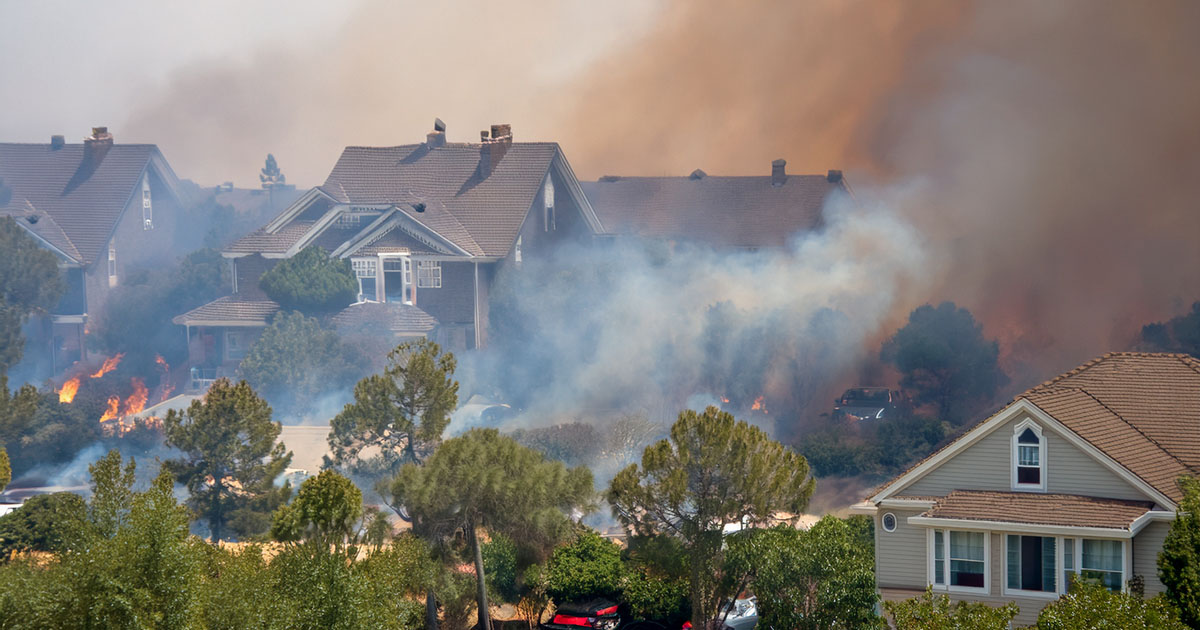Why Rising Energy Costs Make Smarter Housing a No-Brainer
What a recent Ezra Klein episode reveals about cost, permitting, and how to rebuild faster On a recent episode of The Ezra Klein Show, climate...
6 min read
 Timothy Lorang
:
Jul 13, 2025 8:03:04 AM
Timothy Lorang
:
Jul 13, 2025 8:03:04 AM

Wildfires don’t just destroy homes—they upend entire communities. From Paradise to Lahaina to Los Angeles, fire survivors face years of delays, red tape, and painful decisions about whether they can afford to return at all. The challenge is enormous: rebuild thousands of homes faster, but also safer and smarter—without repeating the mistakes that made them vulnerable in the first place.
The good news is: we already know how to build homes that can resist fire, keep people safe, and go up faster than conventional construction. The barriers aren’t technical—they’re legal, financial, and bureaucratic, plus simply creating awareness.
This blog is a guide for local officials, builders, and planners looking to break that logjam. It shows how to rebuild resilient communities with non-combustible materials, nearly airtight Passive House design, and streamlined permitting—and why prefabrication is the key to doing it all at scale.
The headlines speak for themselves:
What’s causing the holdup? A combination of real-world barriers that almost every fire-struck town faces:
Before anything can be built, the land must be cleared. That means removing toxic debris, verifying soil safety, and sometimes rebuilding infrastructure. In Maui, the U.S. Army Corps of Engineers spent seven months just clearing home sites—often followed by private contractor delays.
Then comes permitting, which can take months or years. If the previous home didn’t meet today’s code (which is likely so), the new one usually must comply with updated zoning, WUI fire codes, and seismic standards. In some cases, non-conforming homes may require custom redesigns or variances to rebuild.
"We don’t want to give you false hope that it’s going to happen in a year or two years. Our rebuild is a 20-year rebuild, and we know that. We have a long ways to go, but we’re making progress."
-Paradise, CA, Mayor Steven Crowder
Wildfires often hit rural or suburban areas that already lacked deep labor pools. When hundreds or thousands of homes need rebuilding at once, skilled tradespeople become scarce and costs skyrocket. Families with limited insurance or savings often find that they can’t afford to rebuild, especially under new codes.
Many survivors are forced to live far from their property, juggling insurance claims, FEMA appeals, and architectural plans from afar. Renters and low-income residents often fall through the cracks entirely.
“It’s expensive. There’s people that can afford it. But what about the people that can’t?”
— Paradise resident
Without public support and policy reform, fire recovery favors the well-off. That’s a moral hazard—and a practical failure. We need approaches that work for everyone.
Historically, jurisdictions have treated speed and safety as a trade-off: either cut red tape and rebuild quickly, or raise standards and accept delays. But recent examples show that it’s possible to do both—if we rethink the process.
After the 2018 Camp Fire, Paradise adopted a bold strategy: require all new homes to meet the IBHS Wildfire Prepared Home standard. That meant ember-resistant vents, non-combustible 5-foot zones, Class A roofing, and more. PG&E committed to undergrounding all power lines. Roads were redesigned for smoother evacuations.
The result? Paradise is now one of the most fire-prepared towns in America. But progress was slow and costly.
"It was really important to us that we learned lessons from what happened here and that we share those, but we're really looking at the science that exists now to make it better here," said Colette Curtis, the town's recovery coordinator.
Average home prices rose from $236k to over $450k. Many retirees and lower-income residents couldn’t afford to return.
After the January 2025 Palisades and Eaton Canyon fires, California and LA officials prioritized speed:
“We will not let overly strict regulations get in the way of rebuilding these communities. The state stands with its local partners to ensure that we cut red tape and make recovery as easy as possible.”
- Governor Gavin Newsom
This fast-tracked approach avoided the delays Paradise experienced—but it largely allows rebuilding what was there before, without requiring or even encouraging safer materials or design.
At Simplus Systems, we believe the answer lies in fast-tracking innovations in safety, not just expediency. That means reforming permitting to accelerate construction methods that reduce fire risk and rebuild smarter communities—not just restore the status quo.
Here’s how:
Passive House is best known for its energy performance, but it also offers critical wildfire resilience:
In recent California wildfires, homes built to Passive House standards were among the only ones left standing in their neighborhoods.
These homes aren’t just energy efficient—they’re sealed, healthy refuges in a smoky, dangerous world. Rebuilding with Passive House design means safer homes and lower utility bills for decades to come.
Our blog, Wildfire Resilient Homes: Safe Indoor Air with Passive House Design, details the benefits of Passive House Design in fire-prone areas.
Magnesium oxide (MgO) panels are a game changer for wildfire zones. Compared to traditional wood-frame or OSB-based walls, Simplus Systems’ MgO panels:
They're also structurally strong, code-compliant, and made for precision prefabrication.
But there’s a catch: many local codes haven’t caught up. MgO often requires lengthy approvals or special testing—even when it clearly improves safety.
Just as Local Code Review Committees and the International Code Council have written code sections allowing the use OSB-faces SIPs in residential construction, the same allowances should be given to even safer and stronger building materials, such as MgO-faced SIPs.
Our blog: Wildfire Resilient Homes: Fireproofing with MgO Panels That Don’t Burn explains the advantages MgO panel construction.
Unlike traditional stick-built construction, Simplus panels are manufactured in a factory and assembled rapidly on-site. That means:
After the Woolsey Fire, some Malibu residents used prefab homes to return home in a fraction of the time. In LA, Mayor Bass even created a 30 day expedited approval pathway for building permits. Los Angeles County has similar allowances for Pre-Approved Plans. More jurisdictions should follow suit and include pre-approved prefab assemblies.
Permit reform idea: Create a statewide list of pre-approved prefab assemblies (including MgO and Passive House packages) to expedite rebuilds.
Many fire-hit communities were already suffering from housing shortages before the flames came. Wildfire recovery is a moment to rethink zoning and affordability, not just rebuild what was there.
Rebuilding with multi-family Passive House designs using MgO panels allows us to:
Today, more enlightened zoning regulations often give “density bonuses” to encourage affordable housing, and automatic fire sprinklers are often required to reduce the spread of fires in combustible construction. Similarly, more and more planners are also recognizing how “walkable communities” create much more enjoyable, socially supportive, and healthier activities for citizens. With growing recognition of Passive House and MgO construction benefits, zoning can now incentivize their use in mixed-use developments—promoting safer, more energy-efficient, and optimal living environments.
Truly resilient communities rebuild more than walls. They invest in:
Paradise did all of this—with help from FEMA, PG&E, CAL FIRE, and local planners. The funding exists; what’s needed is early coordination and political will.
Tip for jurisdictions: Use HUD CDBG-DR grants and FEMA Hazard Mitigation funding not just to restore, but to redesign the built environment.
In the words of educator and Paradise resident Casey Taylor:
“It would be a complete tragedy to waste the opportunity… to build back safer and stronger.”
Simplus Systems stands ready to help meet that challenge. With MgO panel systems, Passive House expertise, and a design-build model ready to scale, we offer a way forward that doesn’t force a choice between speed and safety. Not only is this approach ideal for those in fire hazard zones, it’s undeniably the more sensible way to build any building.
➤ Let’s rebuild faster, safer, and smarter—together.
If you have a project or want to learn more, Contact Simplus Systems.

What a recent Ezra Klein episode reveals about cost, permitting, and how to rebuild faster On a recent episode of The Ezra Klein Show, climate...

Wildfires don’t just destroy homes—they upend entire communities. From Paradise to Lahaina to Los Angeles, fire survivors face years of delays, red...

When a wildfire hits, most people worry about flames. But smoke is often both the immediate killer and the more pervasive, long-lasting...